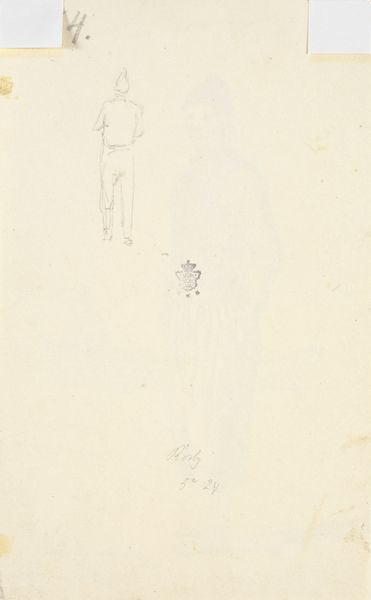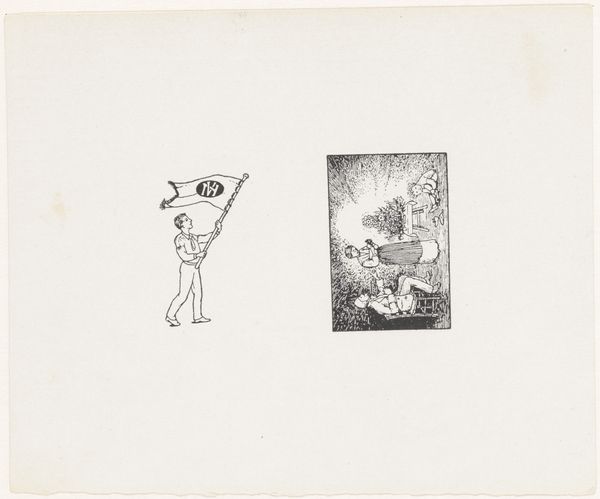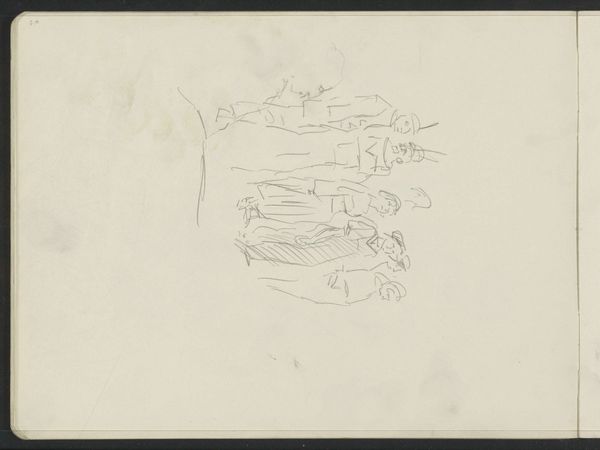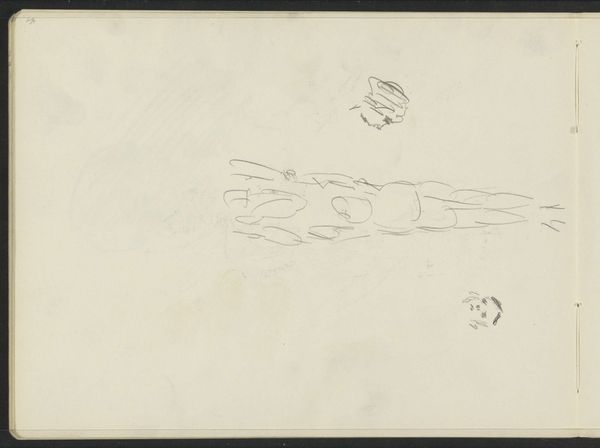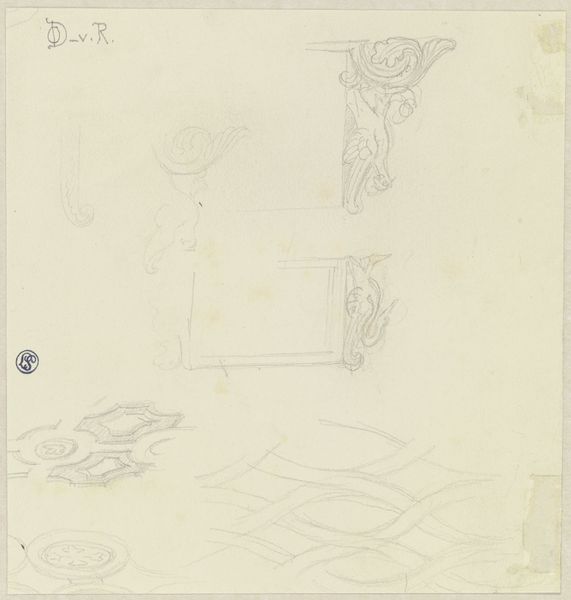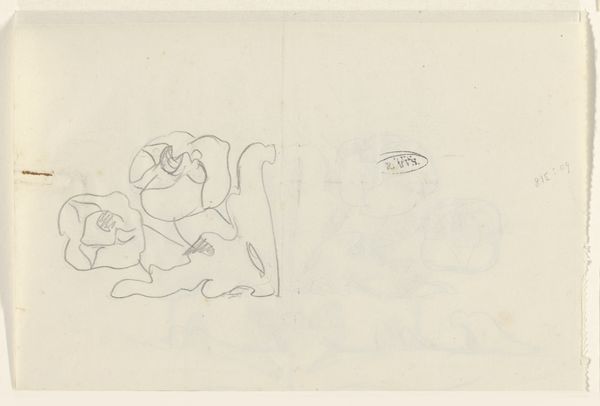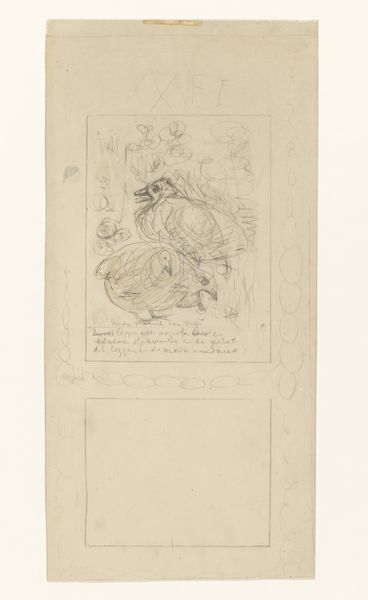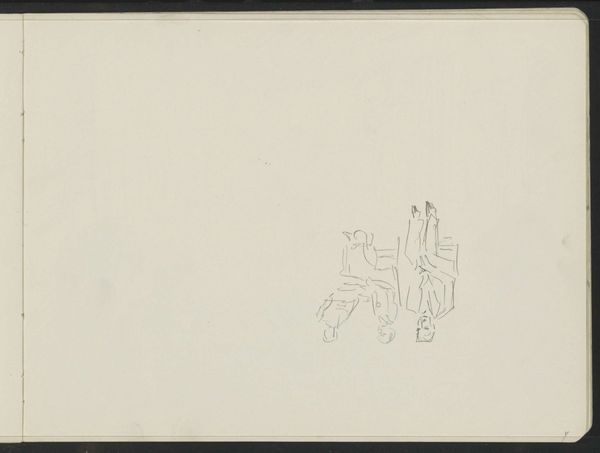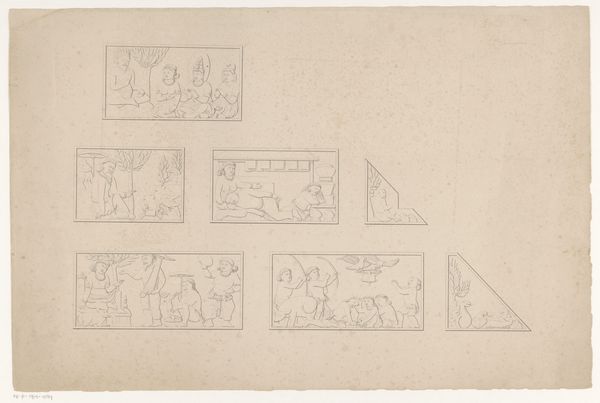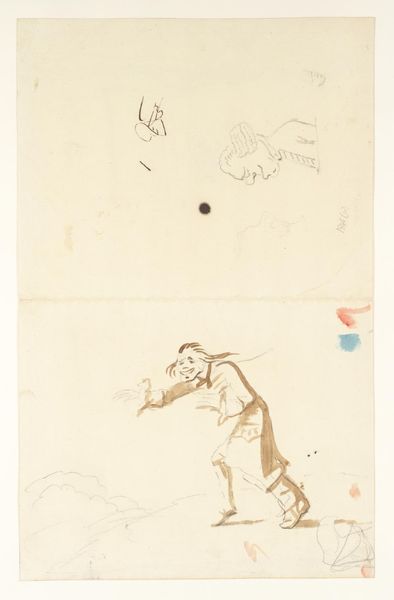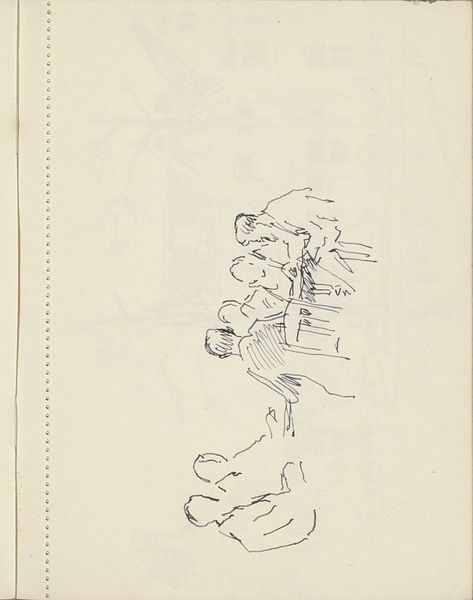
Eine Victoria und Zeus als Adler als zwei Seiten einer Medaille
0:00
0:00
drawing, ink
#
drawing
#
16_19th-century
#
allegory
#
figuration
#
ink
#
german
#
ancient-mediterranean
#
sketchbook drawing
Copyright: Public Domain
Editor: Here we have Gustav Heinrich Naeke’s ink drawing, “Eine Victoria und Zeus als Adler als zwei Seiten einer Medaille," housed here at the Städel Museum. The figures feel so cleanly classical, almost like illustrations from a storybook. What strikes you about this work? Curator: The simplicity of the materials and process is very interesting here. Consider ink on paper, a relatively accessible medium even in the 19th century. It speaks to the dissemination of classical ideals – perhaps these designs were intended for mass production? How do you see these figures relating to broader social values of the time? Editor: That's interesting. I hadn't considered the possibility of mass production. It makes sense given the clean lines. I suppose the imagery also reinforces a sense of order and hierarchy. The figure of Victory and Zeus, aren't they often symbols of power and control? Curator: Exactly. And note how they're presented: a figure of Victory and then Zeus. One could delve into the means by which societies, even those steeped in democratic ideals, legitimized power through material culture. Who benefited from this kind of imagery being so easily reproduced and consumed? Editor: So it is more than just art, but about communicating a specific political message that reinforces social structures? I am wondering, could that medallion have been for someone important or influential? Curator: Precisely. The drawing prompts questions about access, consumption, and power relations within the historical context. Consider the role of labor in replicating this design—were these mass-produced items or meticulously crafted works intended for elite patronage? What more can be gleaned from just the paper and ink about German culture? Editor: I never thought about it that way. Now the seemingly simple drawing seems full of complex questions about the society and time it was made in! Curator: Indeed! It serves as a lens through which to examine not just artistic skill, but also the economic and social currents that shaped its creation and reception.
Comments
No comments
Be the first to comment and join the conversation on the ultimate creative platform.
